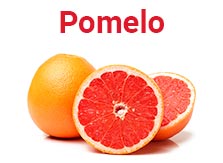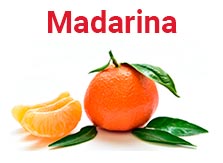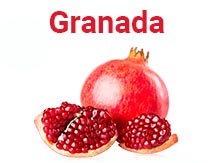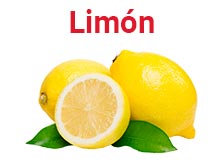Table of Contents

Antonio Marco is an international citrus transportation company specializing in controlled temperature distribution. The main origins for citrus transportation from Spain are: Tarragona, Castellón, Valencia, Alicante, Murcia, Almería, Córdoba, Seville, and Huelva as the most relevant.
| Citrus Loading Temperature | Citrus Transportation Temperature | Relative Humidity for Citrus | |
| Mandarins | 4 – 10ºC | 8 – 10ºC | 90 – 95% |
| Oranges | 2 – 10ºC | 3 – 10ºC | 85 – 90% |
| Grapefruits | 8 – 12ºC | 8-12ºC | 85 – 90% |
| Lemons | 8 – 12ºC | 8-12ºC | 85 – 90% |
| Pomegranates | 4 – 6ºC | 4ºC | 85 – 90% |
Citrus is a family of fruits that includes a wide variety of fruit trees such as orange, lemon, grapefruit, and mandarin, among others. As they come from subtropical regions, citrus fruits have very low cold resistance (the plant dies at temperatures between -3 to -5ºC). During the colder months, citrus trees enter a period of quiescence, a state of rest characterized by the inability of the plant to grow, although its vital functions remain active. This process stimulates the branches to flower in the spring.
Citrus – Which Fruit Trees Does Its Family Encompass in Spain?
Among the main citrus fruits produced in our country, you can find oranges, lemons, and grapefruits. However, the undisputed star product of the Spanish citrus industry is the mandarin/clementine (remember that the clementine is a cross between the orange and mandarin), which ranks second in global production, surpassed only by China.
Citrus Families by Production
Citrus fruits are typically found in the same regions, but this varies depending on their type. The citrus region for oranges is Valencia, while for lemons, it’s Murcia, for example.
-
- Orange: Approximately half of the total Spanish citrus production comes from Valencia, with the southern regions like Seville and Huelva being significant contributors to the overall production in Spain.
- Mandarin: The provinces of Valencia, Huelva, and Seville encompass the largest production area in Spain.
- Pomegranate: In the southern region of Alicante, with the mollar pomegranate having its D.O.P. in Elche and the mollar Valenciana having its D.O.P. Other areas where pomegranates gain presence include Andalusia, specifically Córdoba.
- Grapefruit: The Region of Murcia is the largest producer in the national market, accounting for about a third of global production. Other regions where it is produced include the Valencian Community and Andalusia.
- Lemon: Murcia is the primary lemon-producing region in all of Europe, contributing significantly to 64% of the national lemon production within the European Union. The southern region of Alicante and the province of Málaga also contribute to the production of this fruit.
International Citrus Transportation
- Germany: One of the major consumers of citrus in Europe, with a much larger market volume. Their citrus of choice is primarily lemons and oranges. Citrus transportation from Spain to Germany
- France: The French have a strong preference for oranges and are known for their sweet tooth, making them avid importers of Spanish oranges. Citrus transportation from Spain to France.
- Netherlands and Belgium: These countries serve as major European ports and are significant importers of citrus on a global scale. While they consume less themselves, a substantial portion of citrus exports to countries like Russia pass through their hands. Citrus transportation from Spain to the Netherlands and Belgium.
- United Kingdom: A major importer of mandarins and oranges, with a growing demand for pomegranates at the beginning of the season, particularly varieties with a more acidic taste like the Smith. Citrus transportation from Spain to the United Kingdom.
Controlled Temperature Storage – Citrus
- Orange: It is recommended to maintain temperatures in storage chambers above 4 degrees. It’s important to note that the temperature should never reach freezing, which is between 1.5 and 2ºC, and there is sensitivity to low temperatures, leading to some physiological alterations. The optimal temperature is typically around 4-8ºC, depending on customer requirements.
- Mandarin: Lower temperatures are often applied to stored mandarins to extend their shelf life, reducing transpiration and preventing fungal growth. The recommended storage temperature for mandarins is typically between 4 and 8 degrees.
- Pomegranate: Pomegranates should be stored at a conservation temperature of 4-6°C for a maximum of 2-3 months. For longer storage, temperatures closer to 10 degrees are recommended, but there is limited knowledge on this from our experience.
- Lemon: Storing lemons below 8 degrees is not common as they are quite susceptible to cold damage, resulting in black areas on the product and necrosis on the peel. Therefore, lemons are typically stored at temperatures between 8-12ºC.
- Grapefruit: Similar to lemons, grapefruits should not be stored at temperatures below 8ºC, as it can lead to defects and skin blemishes. Therefore, grapefruits are generally stored at temperatures between 8-15ºC with a relative humidity of 90-95%.
If you want to see what our director Antonio Marco has to say, you can read the following interview conducted by the renowned German magazine Fruchthandel Magazin.
https://antoniomarco.com/news/antonio-marco-habla-para-fruchthandel/
If you’d like to read more about these citrus fruits, you can explore our following posts.






